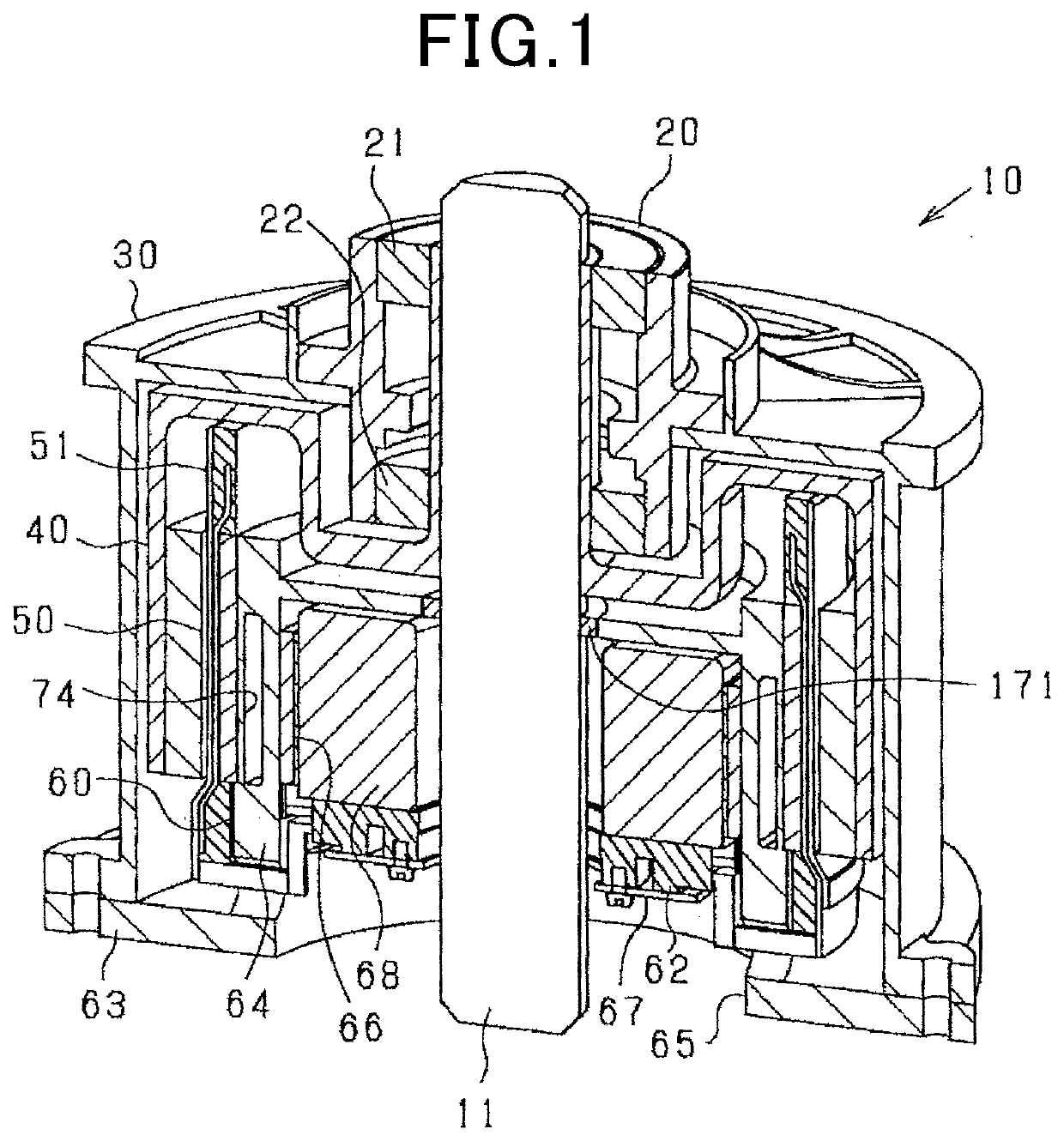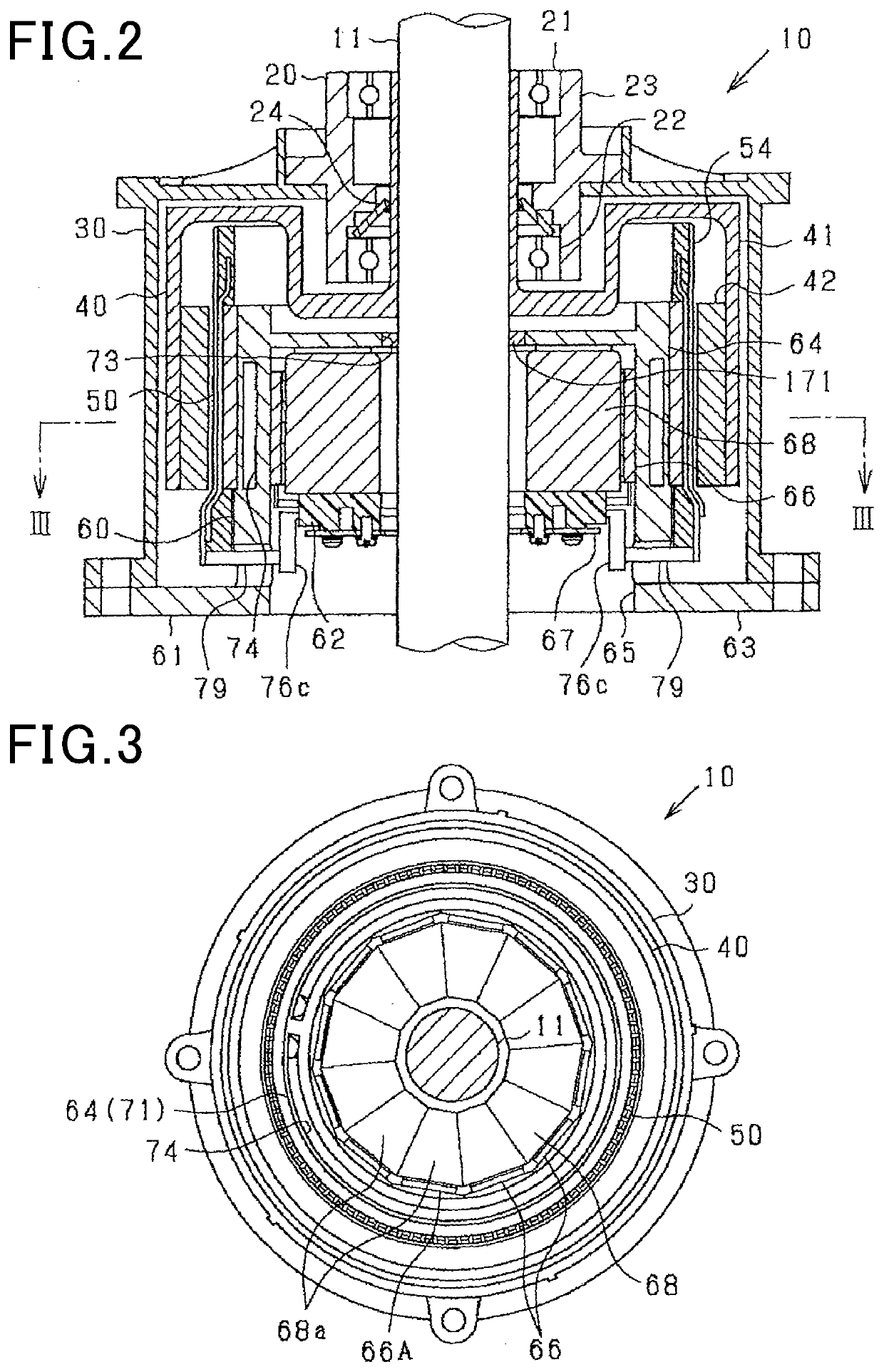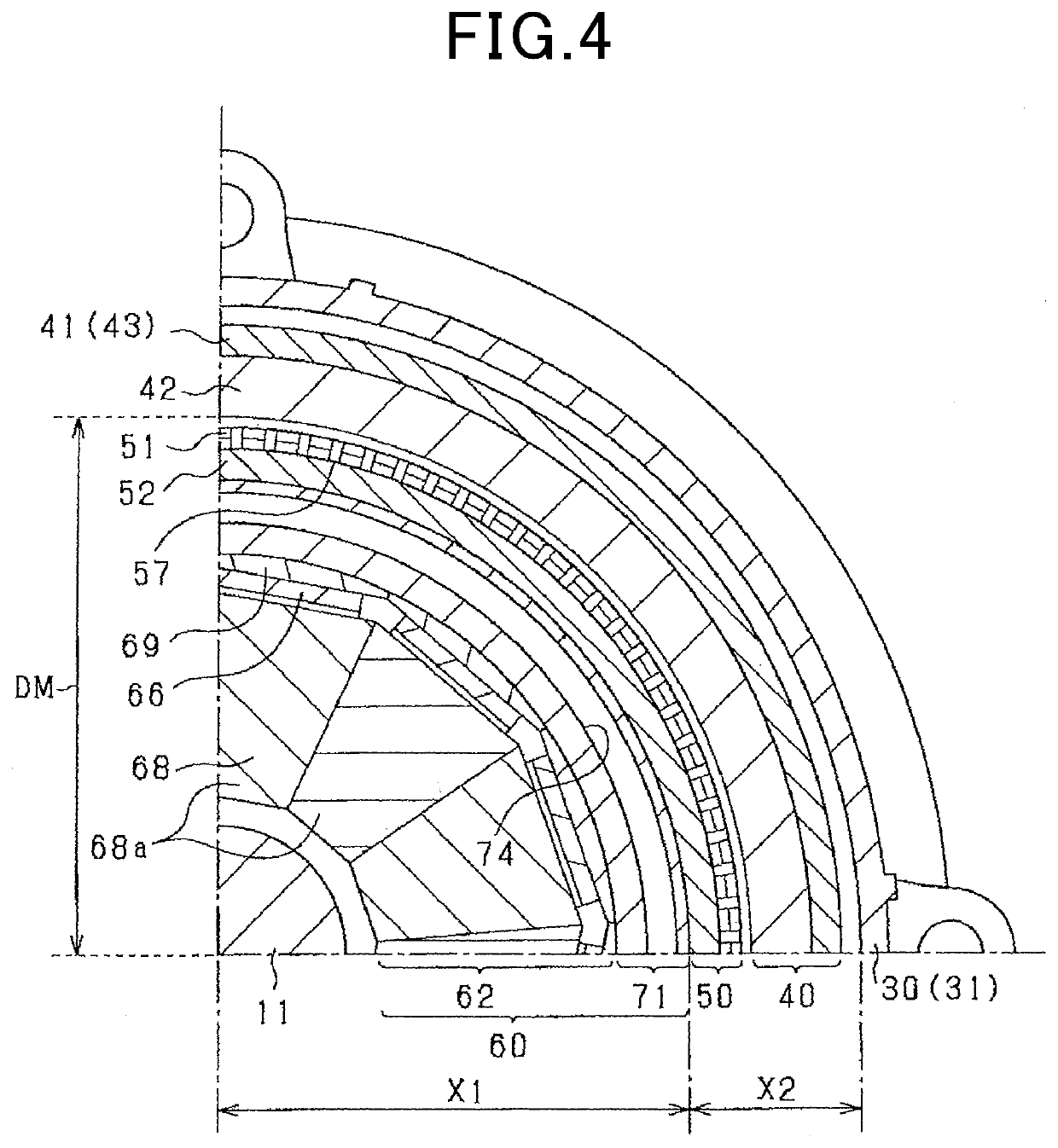Rotating electrical machine
- Summary
- Abstract
- Description
- Claims
- Application Information
AI Technical Summary
Benefits of technology
Problems solved by technology
Method used
Image
Examples
first embodiment
[0127]The rotating electrical machine 10 in this embodiment is a synchronous polyphase ac motor having an outer rotor structure (i.e., an outer rotating structure). The outline of the rotating electrical machine 10 is illustrated in FIGS. 1 to 5. FIG. 1 is a perspective longitudinal sectional view of the rotating electrical machine 10. FIG. 2 is a longitudinal sectional view along the rotating shaft 11 of the rotating electrical machine 10. FIG. 3 is a traverse sectional view (i.e., sectional view taken along the line III-III in FIG. 2) of the rotating electrical machine 10 perpendicular to the rotating shaft 11. FIG. 4 is a partially enlarged sectional view of FIG. 3. FIG. 5 is an exploded view of the rotating electrical machine 10. FIG. 3 omits hatching showing a section except the rotating shaft 11 for the sake of simplicity of the drawings. In the following discussion, a lengthwise direction of the rotating shaft 11 will also be referred to as an axial direction. A radial direct...
second embodiment
[0301]In this embodiment, the polar anisotropy structure of the magnet unit 42 of the rotor 40 is changed and will be described below in detail.
[0302]The magnet unit 42 is, as clearly illustrated in FIGS. 22 and 23, made using a magnet array referred to as a Halbach array. Specifically, the magnet unit 42 is equipped with the first magnets 131 and the second magnets 132. The first magnets 131 have a magnetization direction (i.e., an orientation of a magnetization vector thereof) oriented in the radial direction of the magnet unit 42. The second magnets 132 have a magnetization direction (i.e., an orientation of the magnetization vector thereof) oriented in the circumferential direction of the magnet unit 42. The first magnets 131 are arrayed at a given interval away from each other in the circumferential direction. Each of the second magnets 132 is disposed between the first magnets 131 arranged adjacent each other in the circumferential direction. The first magnets 131 and the seco...
fifth modification
[0344]The conductor-to-conductor members of the stator 50 may be made of a non-magnetic material other than resin. For instance, a non-metallic material, such as SUS304 that is austenitic stainless steel.
PUM
 Login to View More
Login to View More Abstract
Description
Claims
Application Information
 Login to View More
Login to View More - R&D
- Intellectual Property
- Life Sciences
- Materials
- Tech Scout
- Unparalleled Data Quality
- Higher Quality Content
- 60% Fewer Hallucinations
Browse by: Latest US Patents, China's latest patents, Technical Efficacy Thesaurus, Application Domain, Technology Topic, Popular Technical Reports.
© 2025 PatSnap. All rights reserved.Legal|Privacy policy|Modern Slavery Act Transparency Statement|Sitemap|About US| Contact US: help@patsnap.com



